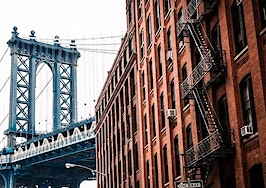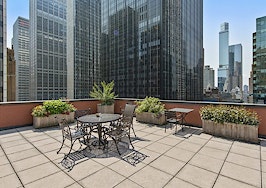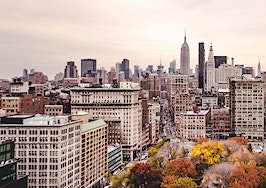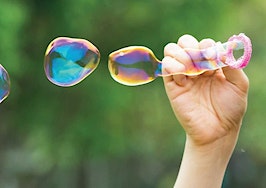- Based on the residential median sale price, ZIP code 10013 -- encompassing mostly TriBeCa, SoHo and Hudson Square -- came in fourth at $3.4 million.
- Lower Manhattan (10007), which spans from parts of TriBeCa and the Financial District, was ninth on the list, with 90 sales at a median price of $2.8 million.
- Zip code 10282, also known as Battery Park City, made it to number 20 with a median price of $2,325,000 and 15 total sales last year.
- The Empire State held seven spots on the list, with four ZIP codes in the Hamptons and Long Island also making the cut.

Manhattan’s Tribeca neighborhood/Flickr user jacopast
If they were modest before, Manhattan homeowners can further gloat about their home values after reading the latest PropertyShark report on home prices. Two prime spots in Manhattan snagged spots on the top 10 most expensive ZIP codes list of 2015, according to the real estate data company.
Based on the residential median sale price, ZIP code 10013 — encompassing mostly TriBeCa, SoHo and Hudson Square — came in fourth at $3.4 million. The price is based on 277 sales and a total volume of $1,152,684,619.
ZIP code 10013 has made a considerable jump from PropertyShark’s previous report, which included data between January 2014 and June 2015. Last year, TriBeCa, SoHo and Hudson Square came in at sixth in the nation with a median sales price of $2.8 million.
“If you look at the boundaries for 10013, you’ll see that it spans quite an area, going as far east as the Bowery, while westward you have Soho and Tribeca. [It’s] quite an interesting cross section of inventory with new buildings over the years,” said Nicole Beauchamp, global real estate advisor at Engel & Völkers NYC.
Lower Manhattan (10007) was ninth on the list with 90 sales at a median price of $2.8 million. Total volume was $287,585,705 for the area, which spans from parts of TriBeCa and the Financial District. The zone has dropped from its previous position of seventh in the nation, when the median sales price was high compared to other cities in the U.S. at $2,763,711.
ZIP code 10282, also known as Battery Park City, didn’t hit the top 10, but made it to number 20 with a median price of $2,325,000 and 15 total sales last year. Previously, zip code 10282 was number 13 with a median sale price of $2.4 million.
“It is fascinating that in as much as the media often focuses on Billionaires Row, NYC’s three zip codes making the list of priciest in the country are all downtown,” Beauchamp said. “Every time I am downtown, I see such vibrancy and see retailers and restaurants making a home. I love Brookfield Place, as an example.”
New York City wasn’t the only star in steepest ZIPs last year. The Empire State held seven spots on the list, with four ZIP codes in the Hamptons and Long Island.
The number one spot belongs to Sagaponack (11962) in the Hamptons, with a median sale price of $8.5 million. There were five total sales in 11962 last year. Sagaponack was also the priciest ZIP code from January 2014 to June 2015, with a median price of $5.125 million.
Bridgehampton, located in ZIP code 11932 in the Hamptons, was seventh with 81 sales and a median price of $2,957,000. Bridgehampton’s home sales brought in $378,554,594 in transaction volume last year.
“This evening at an event unrelated to real estate, I was discussing with someone where he thought he might purchase his next retreat,” Beauchamp said. “And at the top of his list was the Hamptons.”
Shelter Island Heights, in Suffolk County ZIP code 11965, rounded out the top 10 with a median $2,797,500 from eight sales.
Water Mill, New York, was number 13 on the list, with a median price of $2,675,000. Water Mill had 95 sales last year, passing $367,575,355 in sales volume to the market. From early 2014 to mid-2015, Water Mill was ranked number 16, with a median sale price of $2,337,500.
“When I’m looking at the real estate market, I am keen to understand for those coming into New York, for example, where they are coming from and where they are going to– whether it’s when they need more space and are leaving the city entirely, or they are looking for secondary or tertiary homes,” Beauchamp said.









